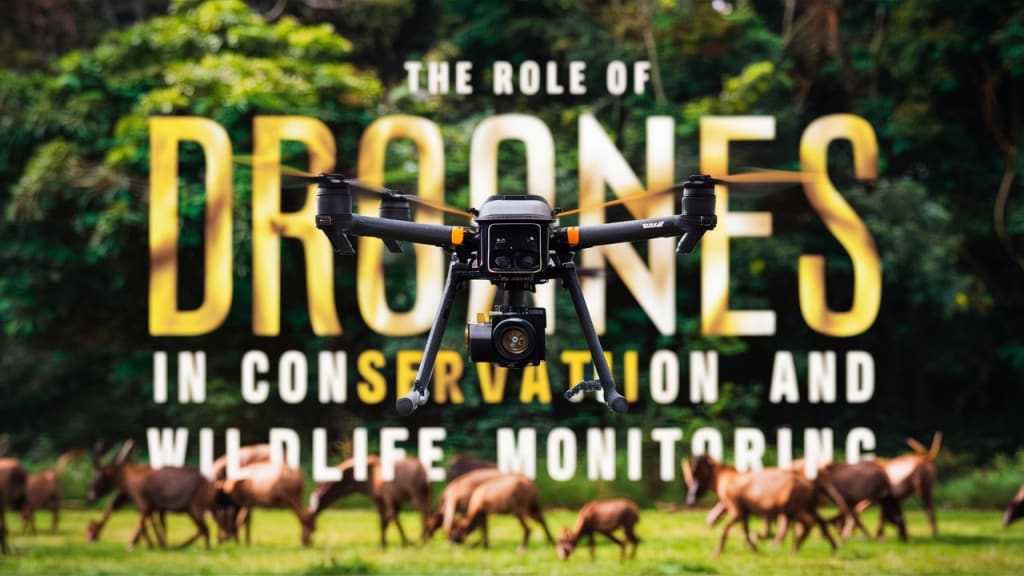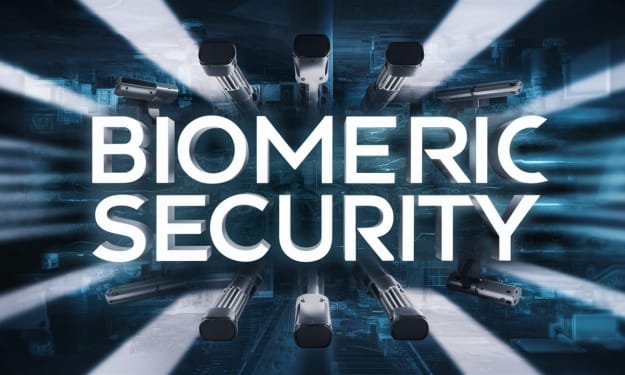The Role of Drones in Conservation and Wildlife Monitoring
How Flying Robots are Helping to Save Our Planet

Introduction
Drones, also known as unmanned aerial vehicles (UAVs), have become more than just gadgets for hobbyists. They are now powerful tools in the fight to conserve our planet's wildlife and natural habitats. This article explores how drones are being used in conservation and wildlife monitoring, highlighting their benefits, applications, and the future of this exciting technology.
The Rise of Drones in Conservation
From Hobbyist Toys to Conservation Tools
Drones have evolved significantly since their early days. Originally developed for military purposes, they have now found applications in many civilian fields, including conservation. The ability to capture high-resolution images and videos from the air, cover large areas quickly, and access hard-to-reach places makes drones invaluable for conservation efforts.
Early Uses in Conservation
Mapping and Surveying: Initially, drones were used to create detailed maps and surveys of protected areas, helping conservationists understand the landscape and plan their activities.
Wildlife Photography: Conservationists and researchers started using drones to capture images of wildlife, providing a new perspective and valuable data without disturbing the animals.
Advancements in Drone Technology
With advancements in technology, drones have become more accessible and capable. They now come equipped with high-definition cameras, thermal imaging, GPS, and various sensors that enhance their functionality in conservation.
Key Features:
High-Resolution Cameras: Capture detailed images and videos from the air, allowing for accurate monitoring and documentation.
Thermal Imaging: Detects heat signatures, which is useful for monitoring wildlife at night or in dense vegetation.
GPS and Mapping Software: Enables precise location tracking and mapping, essential for surveying large areas and monitoring changes over time.
Applications of Drones in Conservation
Protecting Wildlife and Preserving Habitats
Drones are being used in numerous ways to aid conservation efforts, from monitoring endangered species to combating illegal activities like poaching and deforestation.
Wildlife Monitoring
One of the most significant applications of drones is in monitoring wildlife populations and behaviors.
Key Uses:
Population Surveys: Drones can cover large areas quickly, making it easier to conduct population surveys and track the numbers of various species.
Behavior Observation: Researchers can observe animal behaviors from a distance, minimizing human interference and obtaining more natural data.
Nesting and Breeding Sites: Drones are used to monitor nesting and breeding sites, providing insights into reproductive success and habitat use.
Habitat Monitoring
Drones help conservationists keep an eye on natural habitats, detecting changes and threats that may not be visible from the ground.
Key Uses:
Forest Health: Drones can assess the health of forests by capturing images that reveal areas affected by disease, pests, or drought.
Coastal and Marine Monitoring: Drones are used to monitor coastal erosion, coral reefs, and marine wildlife, providing valuable data for conservation efforts.
Wetland Monitoring: Drones help track changes in wetlands, which are crucial for many species and act as natural water filters.
Anti-Poaching Efforts
Poaching remains a significant threat to many endangered species. Drones are a powerful tool in the fight against this illegal activity.
Key Uses:
Surveillance: Drones can patrol large areas, detecting poachers and alerting rangers to their presence.
Real-Time Monitoring: With live video feeds, drones provide real-time data to conservation teams, allowing for quick responses to poaching threats.
Evidence Collection: High-resolution cameras capture evidence that can be used in prosecuting poachers and illegal loggers.
Disaster Response and Recovery
Natural disasters can devastate wildlife and their habitats. Drones play a crucial role in disaster response and recovery efforts.
Key Uses:
Damage Assessment: Drones quickly assess the extent of damage caused by disasters like hurricanes, wildfires, and floods, providing valuable information for recovery planning.
Rescue Operations: Drones help locate and rescue stranded animals, ensuring they receive the care they need.
Habitat Restoration: By monitoring the recovery of affected areas, drones aid in habitat restoration efforts, ensuring ecosystems are restored effectively.
Benefits of Using Drones in Conservation
Efficiency, Safety, and Cost-Effectiveness
Drones offer several benefits that make them ideal for conservation and wildlife monitoring.
Efficiency
Drones can cover large areas quickly and efficiently, collecting data that would take much longer to gather using traditional methods.
Key Points:
Rapid Data Collection: Drones gather data in a fraction of the time it would take on foot or by vehicle.
Accessibility: Drones can access hard-to-reach areas, such as dense forests, mountains, and remote locations, that are difficult or dangerous for humans to reach.
Safety
Using drones reduces the risk to human researchers and conservationists, especially in hazardous environments.
Click Here for Spocket.co: Access Premium Dropshipping Products Instantly!
Key Points:
Hazardous Areas: Drones can safely monitor areas that are dangerous for humans, such as volcanoes, cliffs, and conflict zones.
Wildlife Disturbance: Drones minimize human-wildlife interactions, reducing the stress and disturbance to animals.
Cost-Effectiveness
Drones offer a cost-effective solution for conservation, providing high-quality data without the need for expensive equipment and large teams.
Key Points:
Lower Costs: Drones are relatively inexpensive compared to traditional aerial surveys using helicopters or planes.
Small Teams: A small team can operate multiple drones, reducing the need for large crews and extensive resources.
Challenges and Considerations
Addressing the Limitations of Drone Use in Conservation
While drones offer many advantages, there are also challenges and considerations that need to be addressed.
Technical Limitations
Drones have technical limitations that can impact their effectiveness in conservation efforts.
Key Issues:
Battery Life: Limited battery life restricts the duration of drone flights, requiring frequent recharging or battery changes.
Weather Conditions: Drones can be affected by adverse weather conditions, such as high winds, rain, and extreme temperatures, which can limit their use.
Regulatory Challenges
The use of drones is subject to regulations that vary by country and region, impacting their deployment in conservation efforts.
Key Issues:
Flight Restrictions: Regulations may restrict where and when drones can be flown, particularly in protected areas and near wildlife.
Permitting: Obtaining the necessary permits and approvals for drone operations can be time-consuming and complex.
Ethical Considerations
Using drones in conservation raises ethical considerations that need to be addressed to ensure responsible use.
Key Issues:
Wildlife Disturbance: While drones minimize human-wildlife interactions, they can still disturb animals if not used carefully. It is important to follow guidelines to minimize disturbance.
Privacy Concerns: Drones can capture images and videos of people and private property, raising privacy concerns that need to be managed responsibly.
The Future of Drones in Conservation
Innovations and Emerging Trends
The future of drones in conservation looks promising, with ongoing innovations and emerging trends set to enhance their capabilities and applications.
Artificial Intelligence and Machine Learning
Integrating artificial intelligence (AI) and machine learning with drone technology will revolutionize conservation efforts.
Key Innovations:
Automated Data Analysis: AI can analyze large datasets collected by drones, identifying patterns and trends that would be difficult for humans to detect.
Real-Time Decision Making: AI-powered drones can make real-time decisions, such as identifying and responding to poaching threats, enhancing the effectiveness of conservation efforts.
Enhanced Sensors and Imaging
Advancements in sensor and imaging technology will provide even more detailed and accurate data for conservation.
Key Innovations:
Multispectral Imaging: Multispectral sensors capture data across different wavelengths, providing insights into vegetation health, water quality, and more.
LiDAR: Light Detection and Ranging (LiDAR) technology creates detailed 3D maps of landscapes, helping conservationists monitor changes and plan interventions.
Collaborative Conservation Networks
The future will see increased collaboration between conservation organizations, researchers, and governments, leveraging drone technology for collective impact.
Key Trends:
Data Sharing: Collaborative networks will facilitate data sharing and joint analysis, enhancing the overall understanding of conservation challenges and solutions.
Global Initiatives: International initiatives will coordinate drone-based conservation efforts across borders, addressing global conservation challenges more effectively.
Conclusion
Drones have become indispensable tools in the field of conservation and wildlife monitoring. Their ability to capture high-resolution images, access difficult terrains, and provide real-time data makes them invaluable for protecting wildlife and preserving natural habitats. As technology continues to advance, the capabilities of drones will expand, offering even more innovative solutions for conservation challenges. By embracing drone technology and addressing its limitations and ethical considerations, we can enhance our efforts to protect the planet and ensure a sustainable future for all species.
About the Creator
Enjoyed the story? Support the Creator.
Subscribe for free to receive all their stories in your feed. You could also pledge your support or give them a one-off tip, letting them know you appreciate their work.






Comments
There are no comments for this story
Be the first to respond and start the conversation.